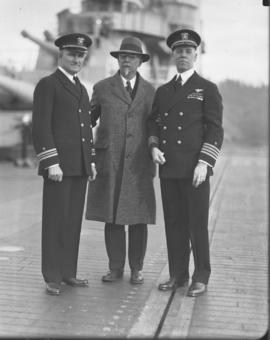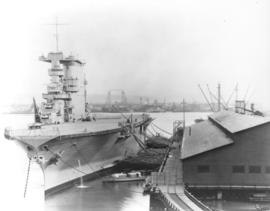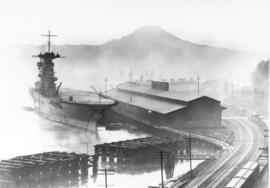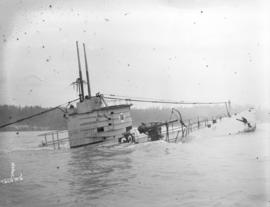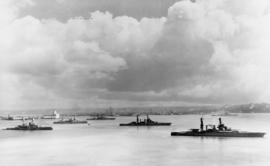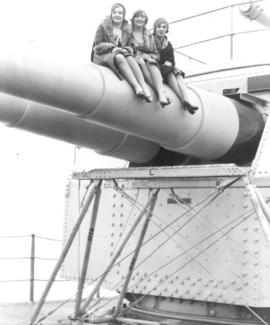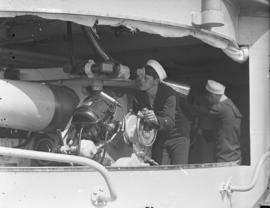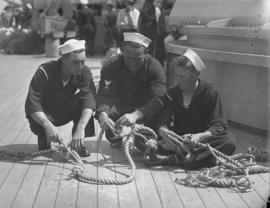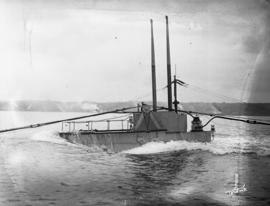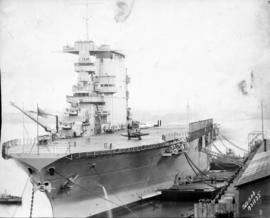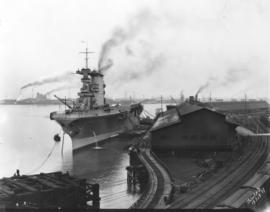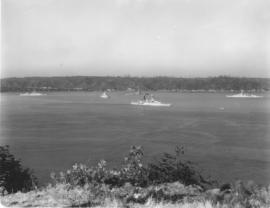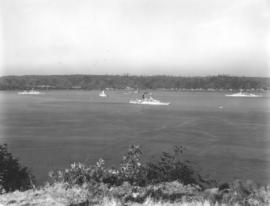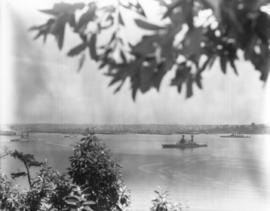On July 20, 1939, as part of Tacoma's Washington State Golden Jubilee celebration, six Navy dreadnoughts, the powerhouses of the Pacific Fleet, entered Commencement Bay at 8:30 in the morning and dropped anchor at the mouth of the Puyallup River. The ships and their 8,000 men and officers would be in Tacoma for the Jubilee celebration and depart on Monday, July 24th. The six battleships, the USS California, USS Pennsylvania, USS Arizona, USS New Mexico, USS Mississippi and the USS Idaho, were available for tours 1-4 p.m. through Sunday. They also provided searchlight shows in the evening and their crews took part in the water carnival races. On December 7, 1941, the California, the Pennsylvania and the Arizona were stationed at Pearl Harbor. The California and the Pennsylvania were damaged; the Arizona was destroyed, with the loss of 1,104 personnel. TPL-9081 (TNT 7/20/39, pg 1-article)
